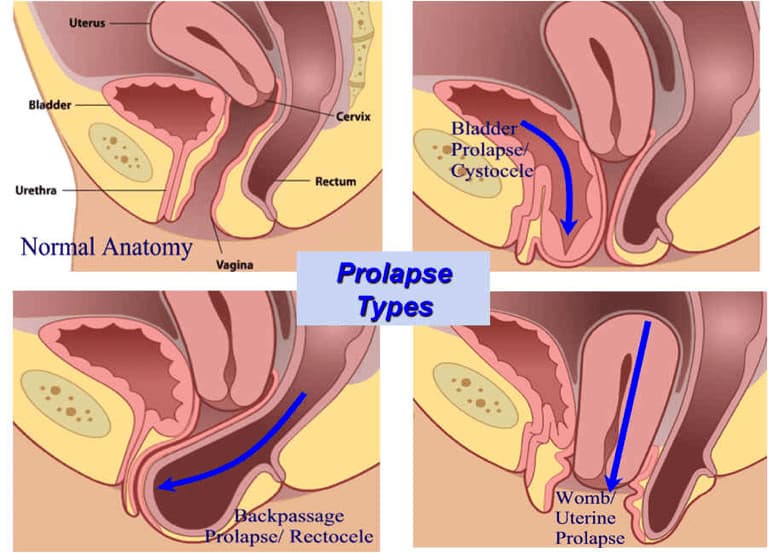Cheer Up, New Moms! Navigating Pelvic Organ Prolapse After Childbirth
Welcome, fabulous parents! There’s no doubt that bringing a new baby into the world is a beautiful adventure, but it can come with its own set of challenges, especially when it comes to postpartum recovery. Today, we’re putting the spotlight on an issue that doesn’t always get the attention it deserves: pelvic organ prolapse after childbirth. Buckle up, as we dive into understanding this condition and reclaim the joy of your postpartum journey!
What Exactly is a Postpartum Prolapse?
Let’s break it down into bite-sized, digestible bits! After the miracle of birth, your body starts a healing process, which sometimes can take unexpected turns. Prolapse occurs when one or more of the pelvic organs – such as the bladder, uterus, or rectum – drops downward into the vagina due to weakened support structures. Imagine your pelvic floor muscles and ligaments as a trusty hammock cradling these organs. After birth, this “hammock” might get a bit stretched or strained, causing a bit of a slip-up in support.
Symptoms of Pelvic Organ Prolapse
Curious about the tells and signs? Here’s what to look out for:
- A feeling of pressure or fullness in the pelvic area
- Noticeable bulge or lump in the vagina
- Difficulty with urination or bowel movements
- Backache or aching in the pelvis
- Pain or discomfort during sexual activity
Note that experiencing these symptoms doesn’t automatically signal a prolapse. However, it’s a strong nudge to check in with your healthcare provider for proper assessment!
Why Does Prolapse Happen After Birth?
If you’re pondering why this happens, you’re not alone! Here’s the scoop: Childbirth can be strenuous on your body, especially if you’ve had a prolonged labor, a vaginal delivery, or delivered a larger-than-average little cutie. When you factor in the pre-birth weight of your baby pressing down on your pelvic floor for months, it’s clear why your support system might need a bit of postpartum TLC.
Who’s At Risk?
While prolapse can be an equal-opportunity nuisance, certain factors can raise your chances of experiencing it:
- A history of pelvic organ prolapse in your family
- Multiple vaginal births
- Being overweight or obesity
- Chronic coughing or constipation, increasing strain on the pelvic floor
- Hormonal changes, especially during menopause
How is Prolapse Diagnosed?
The first step to getting back to your sparkly self is a proper diagnosis. Your healthcare provider will likely perform a pelvic exam and may ask about your symptoms. Sometimes, they might use imaging tests like an ultrasound or MRI to get a clear view of what’s going up – or down, to be precise – in Pelvic Floor Town.
Prolapse Management and Treatment Options
No need to fret because management and treatment options abound! Depending on the severity, these may include:
- Conservative management, like pelvic floor exercises known as Kegels
- Lifestyle changes, such as weight loss and addressing constipation or chronic cough
- Pessaries, devices inserted into the vagina to provide support
- Surgery, for more significant cases which do not improve with other treatments
Remember, every mom’s recovery journey is uniquely her own, so what works wonders for one may not for another. Open, honest conversations with your healthcare team are the golden ticket to finding the best path for you.
Now, let’s lace up those proverbial running shoes and start the developmental lap towards recovery. Ready, set, heal!

5 Essential Things Parents Should Know About Preparing for Postpartum Prolapse
Understanding and preparing for potential postpartum conditions like prolapse can lead to a smoother recovery and less anxiety. Here are five key things to keep in your parenting toolkit:
-
Preventative Pelvic Floor Care Is Crucial
Even before your little bundle arrives, start incorporating pelvic floor exercises into your routine. Strengthening these muscles can not only aid in delivery but can also bolster your body’s resilience to prolapse postpartum.
-
Postpartum Rest and Recovery Matters
After childbirth, give your body the rest it needs. Rushing back to intense activities or lifting heavy objects can increase the risk of prolapse. Honor your body’s signals, and remember that healing is not a race.
-
Seek Support When You Need It
You don’t have to navigate this alone! Chat with other moms, join support groups, or turn to your loved ones for help. There’s strength in community, especially when dealing with postpartum challenges.
-
Nutrition and Hydration Are Your Friends
Eating a balanced diet rich in fiber can prevent constipation – a common factor that worsens prolapse. Staying hydrated keeps everything moving smoothly, which is particularly important for new moms.
-
Become Familiar with Treatment Choices
Knowledge is power – knowing the various treatment options for postpartum prolapse will help you make informed decisions should you experience symptoms. From pelvic floor therapy to surgical options, understanding what’s available can ease concerns about the future.
While prolapse might seem overwhelming, remember that information and proactive steps can make a world of difference. Keep these tips in mind, practice self-care, and appreciate this special time with your new addition to the family. Together, let’s stride towards a healthier and happier postpartum period! Continue to be kind to yourself, glowing parents, and know that every step forward is a victory in the beautiful journey of parenthood.
Ready to Embrace Your Postpartum Body?
While recovering from childbirth and managing conditions like prolapse, it’s crucial to remember that every mother’s journey is unique. Embracing your postpartum body, imperfections included, is a testament to the extraordinary process you’ve been through. Compassion towards yourself is just as essential as the care you shower upon your new baby.
Loving your body through prolapse recovery not only nurtures your self-esteem but also sets a powerful example for your child. Your body has done something incredible, and with patience, knowledge, and support, you’ll emerge from this recovery period even stronger and more in tune with yourself.
As we look to close this chapter on prolapse after birth, remember: you are resilient, you are capable, and your body is remarkable. Walk hand-in-hand with your healthcare provider, prioritize your wellness, and savor the beauty of motherhood—prolapse is just a small detour on the profound journey of parenting.
See more great Things to Do with Kids in New Zealand here. For more information see here
Disclaimer
The articles available via our website provide general information only and we strongly urge readers to exercise caution and conduct their own thorough research and fact-checking. The information presented should not be taken as absolute truth, and, to the maximum extent permitted by law, we will not be held liable for any inaccuracies or errors in the content. It is essential for individuals to independently verify and validate the information before making any decisions or taking any actions based on the articles.




